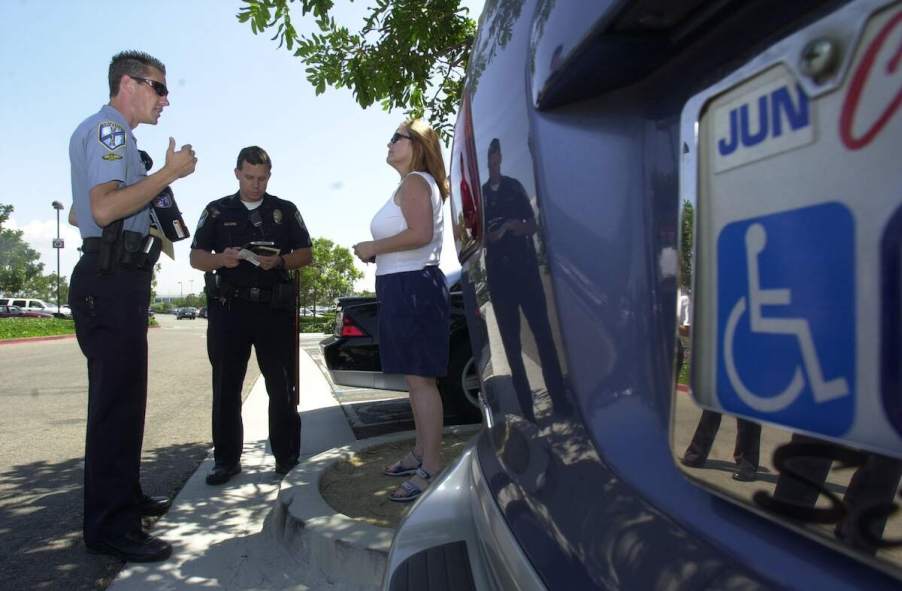
What Happens if You Park in a Handicap Spot Without a Permit?
On many driving tests, you have to show your instructor you can park your vehicle correctly. Cars should always be squarely in the middle of the parking lines or as close as possible. Parking outside the lines will almost certainly annoy your fellow drivers, and it could even get you a ticket in some areas.
You can also get a parking ticket for leaving your car in parking spots you don’t have the authorization to use. In extreme cases, your car can be towed and you may have to pay some expensive fines. What are the penalties for leaving your car in a handicap space?
What is a handicap parking spot?

Handicap parking, also known as disabled or accessible parking, is required by law for any business that provides parking spaces. The exact number of parking spaces required usually depends upon the parking lot’s size.
For example, according to the ADA, there must be five accessible parking spots of 101 to 150 standard parking spots. Hospitals and other medical facilities usually must have more accessible parking spots.
In addition, every parking space must be eight feet wide, and the access aisle must be five feet wide. Van-accessible parking spaces have to be at least 12 feet wide. Though there are a few exceptions, each space usually also has a sign, blue parking markers, and a blue-painted bumper to indicate it’s an accessible spot.
These parking spaces should always be free of ice or other fall hazards. In a few states, the International Symbol of Accessibility must be displayed on a sign in front of the parking spot. It’s a simple image of a person sitting in a wheelchair, like the one displayed on accessible parking placards.
What happens if you use a handicap parking spot without a permit?
To get a handicap parking permit, you’ll need to visit your doctor and receive documentation of your condition. Most applicants are wheelchair users or have another disability that limits their mobility. You can also get an accessible parking permit for poor vision or certain long-term conditions such as heart disease.
An accessible parking permit application can be obtained online, or you can ask for one at your local DMV. Once you’ve filled out the first section of the form, your doctor must certify the second section with a signature. If you don’t have a doctor’s certification, some states allow you to use a police officer’s signature instead.
After you’ve submitted your application, you’ll get a special parking placard to hang from your rearview mirror. Unless your disability is temporary, this placard is valid for one year before it expires. The DMV should send you a renewal form in the mail.
Leaving your car in a handicap parking space without an accessibility placard is illegal in every state. According to GetJerry, even your first offense can earn you a fine of $200 or more. The owner of the parking lot can also have your vehicle towed. If you’re caught more than once, you might have your driver’s license suspended or revoked.
If someone else besides you tries to use the placard, that’s also against the law. In addition to fines and license suspensions, the DMV can cancel your permit. And falsifying a permit or a doctor’s signature could put you in jail for up to a year.
‘Accessible’ is replacing ‘handicapped’ and ‘disabled’
“Handicap,” “handicapped,” and “disabled” carry negative connotations that many people with disabilities find offensive or demeaning. Therefore, most municipalities have stopped using “handicap parking” and “disabled parking” in favor of “accessible parking.”
Regardless of the wording, the process of obtaining an accessibility placard and the penalties for misusing it remain the same.




